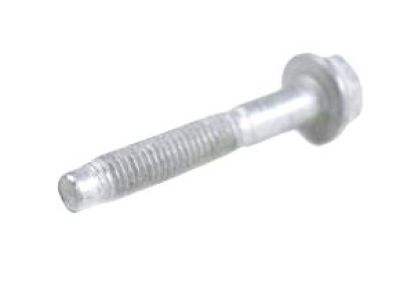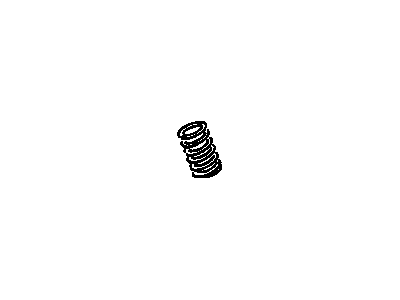My Garage
My Account
Cart
Genuine Chevrolet Silverado Rocker Shaft Spring Kit
Rocker Shaft Spring Set- Select Vehicle by Model
- Select Vehicle by VIN
Select Vehicle by Model
orMake
Model
Year
Select Vehicle by VIN
For the most accurate results, select vehicle by your VIN (Vehicle Identification Number).
9 Rocker Shaft Spring Kits found
Chevrolet Silverado Bolt, Heavy Hx Acorn Flange Head
Part Number: 11588728$0.45 MSRP: $0.70You Save: $0.25 (36%)Ships in 1-3 Business DaysChevrolet Silverado Spring, Valve
Part Number: 12565763$5.40 MSRP: $8.49You Save: $3.09 (37%)Ships in 1-3 Business DaysChevrolet Silverado SPRING-VLV
Part Number: 12728733$4.69 MSRP: $7.39You Save: $2.70 (37%)Ships in 1-2 Business DaysChevrolet Silverado Spring, Valve
Part Number: 98025825$17.24 MSRP: $28.51You Save: $11.27 (40%)Ships in 1-3 Business DaysChevrolet Silverado Spring,Valve
Part Number: 10212811$12.38 MSRP: $19.48You Save: $7.10 (37%)Ships in 1-2 Business DaysChevrolet Silverado Spring,Valve Rocker Arm
Part Number: 97329104$4.46 MSRP: $7.02You Save: $2.56 (37%)Ships in 1-3 Business DaysChevrolet Silverado Spring, Valve Rocker Arm Shaft
Part Number: 12648429$4.76 MSRP: $7.44You Save: $2.68 (37%)Ships in 1-3 Business DaysChevrolet Silverado SPRING-VLV
Part Number: 12729741$4.76 MSRP: $7.50You Save: $2.74 (37%)Ships in 1-2 Business DaysChevrolet Silverado SPRING-VLV
Part Number: 24000389$4.91 MSRP: $7.73You Save: $2.82 (37%)Ships in 1-3 Business Days
Chevrolet Silverado Rocker Shaft Spring Kit
Each OEM Chevrolet Silverado Rocker Shaft Spring Kit we offer is competitively priced and comes with the assurance of the manufacturer's warranty for the part. Furthermore, we guarantee the speedy delivery of your orders right to your doorstep. Our hassle-free return policy is also in place for your peace of mind.
Chevrolet Silverado Rocker Shaft Spring Kit Parts Questions & Experts Answers
- Q: How to valve stem seal and Spring replacement on 4.3L V6 engine on Chevrolet Silverado?A: To replace the Valve Stem Oil Seals, start by removing the valve cover(s) from the Cylinder Head(s), and if replacing all seals, remove all spark plugs too. If replacing all seals, go according to firing order (1-6-5-4-3-2) and begin with cylinder number 1 i.e. skip 120 degrees clockwise for each cylinder. Position the piston in that selected cylinder at Top Dead Center on the compression stroke by rotating the crankshaft. For that target cylinder head, remove all Rocker Arms, Pushrods, and support bars. Screw an adapter into the spark plug hole and attach a compressed air source which applies approximately 90 to 100 psi of pressure to retain valves position. Shop rags should be inserted into the holes on top of the cylinder heads to prevent foreign objects from entering into the engine. A removal tool such as a valve spring compressor can help compress retainers together with valve springs thus allowing keepers' elimination. Old Valve Stem Oil Seal is then taken out after getting rid of spring retainer or rotator together with its assembly. Keep the rubber band or tape on hand for holding down the valve stem so that it does not fall out when releasing air pressure later on. While installing, ensure there is no damage on valve stem but it moves freely in guide without sticking inside it. Air pressure should be reapplied to hold down the valve while taking off tape or rubber bands. After applying some engine oil for lubrication purposes around the stem ends of valves install new seals after tapping them gently with a deep socket or tool used for installation of a seal into place, care being taken not to twist or cock these seals in any way at this point also check if garter spring is properly positioned around the top of each seal before proceeding further with the installation process of valve spring and damper if applicable closely-wound spring coils facing towards cylinder head while securing either rotator or retainer for valve spring. Disconnect the air hose, remove the adapter from the spark plug hole, and repeat the process for the remaining cylinders, aligning each piston with TDC on the compression stroke. Finally, reinstall the rocker arms, support bars, and pushrods, followed by the valve cover(s), spark plug(s), and wires, and start and run the engine, checking for any oil leaks or unusual noises from the valve cover area.
- Q: How to replace the Valve Spring on V8 engine on Chevrolet Silverado?A: To start with, rotate the crankshaft until the number one piston is at Top Dead Center on the compression stroke. Put an adaptor into the spark plug hole and connect an air hose from a compressed air source to it. Then you apply compressed air to the cylinder to hold the valves in place. Prevent any parts or tools from falling into the engine by stuffing shop rags into the cylinder head holes around the valves. Tap gently on top of each valve spring retainer with a socket and hammer in order to break the seal between the valve keeper and the spring retainer. Use a small pair of needle nose pliers or a magnet to remove keepers compressed spring using valve-spring compressor. Remove both spring and retainer then replace old valve stem seals. Check whether there is any damage on the valve stem or eccentric movement or binding. If necessary, remove head for repair. Press new stem seals over valve guide until they are at specified depth. Install keepers in valve stem grooves by compressing spring and placing retainers then drop them in said sequence if need be use grease literally just to stick them down tiny bit of grease will do it this time if needed at all . Follow this process for other cylinders in line with their firing order sequence as shown below: Finally, reinstall Rocker Arm assemblies and valve covers; start engine, check for oil leaks or any other unusual sounds that may be heard from it. Leave engine idling for at least five minutes before revving it.
Related Chevrolet Silverado Parts
Browse by Year
2024 Rocker Shaft Spring Kit 2023 Rocker Shaft Spring Kit 2022 Rocker Shaft Spring Kit 2021 Rocker Shaft Spring Kit 2020 Rocker Shaft Spring Kit 2019 Rocker Shaft Spring Kit 2018 Rocker Shaft Spring Kit 2017 Rocker Shaft Spring Kit 2016 Rocker Shaft Spring Kit 2015 Rocker Shaft Spring Kit 2014 Rocker Shaft Spring Kit 2013 Rocker Shaft Spring Kit 2012 Rocker Shaft Spring Kit 2011 Rocker Shaft Spring Kit 2010 Rocker Shaft Spring Kit 2009 Rocker Shaft Spring Kit 2008 Rocker Shaft Spring Kit 2007 Rocker Shaft Spring Kit 2006 Rocker Shaft Spring Kit 2005 Rocker Shaft Spring Kit 2004 Rocker Shaft Spring Kit 2003 Rocker Shaft Spring Kit 2002 Rocker Shaft Spring Kit 2001 Rocker Shaft Spring Kit 2000 Rocker Shaft Spring Kit 1999 Rocker Shaft Spring Kit














